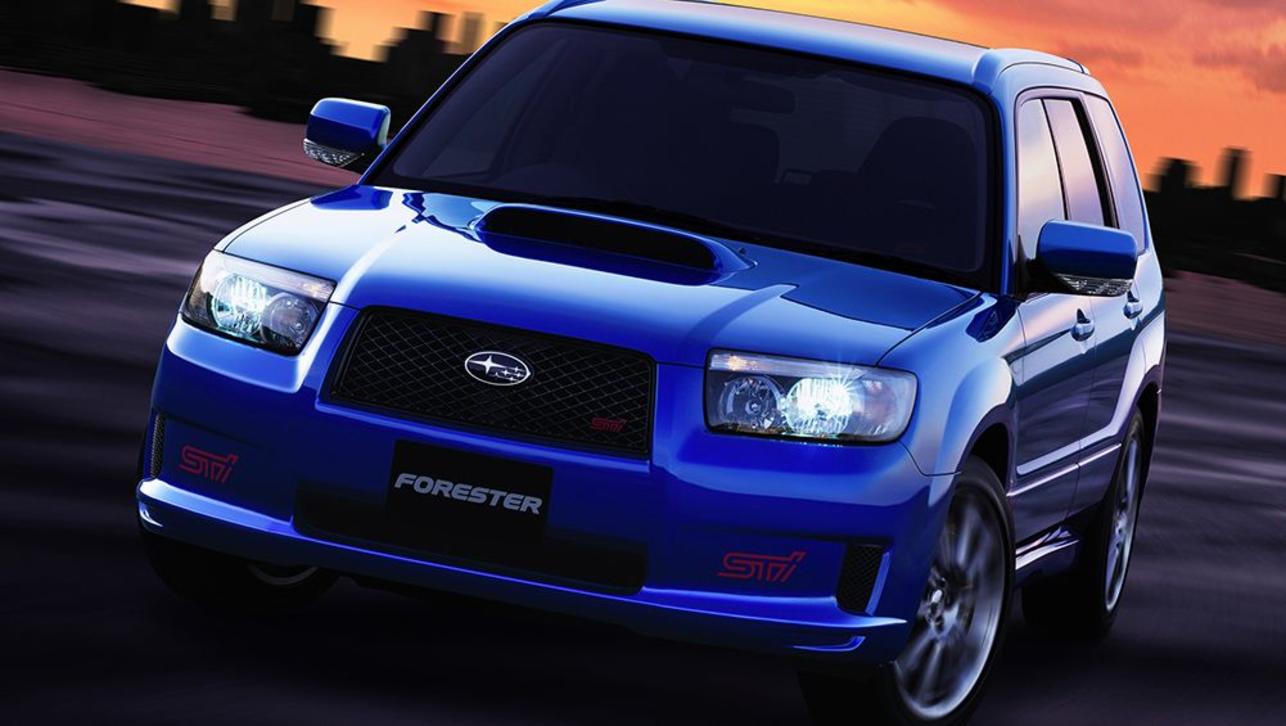It seems like a no-brainer. SUVs are now the dominant form of transportation, yet there’s still an appetite for performance product among those people who need to, for various reasons, have an SUV in their driveway. Squish the two genres together, and surely such a formula would be a smash hit, right?
It sure is in the premium segment. Take Mercedes-Benz for example. AMG versions of its SUV range currently provide around 25-30 per cent of sales volume for their respective model lines, while Audi has also seen impressive uptake of its fast SUVs.
Since the nameplate was introduced in 2013, the SQ5 has reliably accounted for 25-35 per cent of total Q5 sales in Australia.
And yet, why is it that performance SUVs are such a rare sight outside of the premium segment?
While the streets are thick with Audi SQ5s and Mercedes-AMG GLC 63 S, where are the options for less well-heeled folks? Subaru and Mitsubishi, two companies who used to duke it out on the gravel and dirt of the World Rally Championship with the Impreza and Lancer, seem to be in a good position to pivot to performance SUVs now that the WRX STI and Lancer Evolution are dead and buried, but thus far there’s no whiff of a Subaru XV STI or Mitsubishi Eclipse Cross Evolution to carry on that legacy. Mitsubishi’s Outlander-based Vision Ralliart Concept is the closest that brand has come to such a vehicle, but it remains a design study for now.
So too, Toyota. The Japanese auto giant is well-resourced and has funnelled significant capital into establishing its GR performance sub-brand, yet despite the overwhelming global popularity of SUVs of all shapes and sizes, there isn’t a single high-riding option in the proper GR line-up (no, the C-HR GR Sport doesn’t count), nor does there appear to be anything of that description in the product pipeline. Which is a shame, because the C-HR, with its aggressive styling and superb chassis dynamics, seems like the perfect candidate to transplant the GR Corolla’s turbocharged, all-wheel drive underpinnings into.

It didn’t used to be like this. Subaru sold a 195kW Forester STI back in 2004 in the Japanese market, while the turbocharged Forester XT (and Forester GT before it) was a fixture in Australia for three generations before turbo petrols were dropped from the Forester range in late 2018.
Mitsubishi, meanwhile, also marketed the Hyper Sports Gear variant of the first-gen RVR in Japan (the RVR eventually evolved into the ASX), which had the Lancer Evolution’s turbo intercooled 2.0-litre, all-wheel drive, and chunky off-road styling that promised plenty of all-terrain performance. The fact we never got an ASX Evolution seems like a missed opportunity.
And of course who could forget the home-grown hero, Ford’s Territory Turbo, and the absolutely bananas FPV F6X that it spawned? Ford also had the Kuga Titanium – an all-paw mid-size SUV with a detuned version of the Focus XR5’s turbo five-cylinder engine, which was criminally underrated and forgotten by buyers as a result.

The crucial problem was that those vehicles were arguably ahead of their time. The SUV boom had not yet begun and more conventional performance cars and sports cars were still selling strongly. People bought SUVs for pragmatic reasons – if they wanted a performance vehicle, there were many other options available that weren’t compromised by an SUV form-factor. As a result, cars like the FPV F6X simply didn’t sell all that well – that one was axed after just 230 were built, while the Territory Turbo range was trimmed down to just the top-spec Ghia before getting the chop two years later.
However, there’s change in the winds. Besides Nissan’s fairly ho-hum effort with the Juke Nismo (which had genuine performance upgrades but saddled you with an average automatic if you went AWD, while the manual front-driver was too torque-steery and traction-limited to be fun), some hi-po metal is finally arriving to give mainstream SUV buyers something swift to chew on.
Hyundai’s Kona N is one such vehicle. With the i30 N’s 206kW turbo 2.0-litre powerplant mated to an eight-speed auto and stuffed into the Kona’s taller and bigger bodyshell, the Kona N promises plenty of behind-the-wheel fun while also providing the crucial SUV aesthetic that the bulk of buyers are chasing these days. Sure, it’s a front-driver only and there’s no manual, but our James rated it strongly for its driver engagement, it’ll zip to 100km/h in 5.5 seconds and at $48,000 it costs exactly the same as its hatchback brother.

Surprisingly, the Kona N has had pretty low uptake since its launch in December last year, accounting for just 3 per cent of total Kona sales in this country so far this year. That said, car buyers may simply be unaware of its existence or its capabilities, given its newness on the scene. Time may change its fortunes though, as Hyundai Australia is steadily growing its sales of N and N-Line products: last year 17 per cent of all cars it sold were N or N-Line grades, while this year the target is 25 per cent.
Another mainstream manufacturer that’s thrown its hat into the fast SUV ring is Volkswagen. The company has always had a high uptake of its 162kW Tiguan 162TSI since it arrived, but buyers chasing ultimate power now have the ability to choose the 235kW Tiguan R. Boasting the same engine and all-wheel-drive hardware as the Mk8 VW Golf R, the $68,990 Tiguan R is a potent thing. Zero-to-hundred? Just 5.1 seconds.
Volkswagen Australia expects 20 per cent of Tiguan buyers to go for the R, on top of the 45 per cent that are expected to purchase the 162TSI variant. When it comes to the Tiguan, the majority of buyers will clearly preference power.

It’ll be followed in August by the T-Roc R, which has less power and torque at 221kW/400Nm but breaks the five-second barrier with a 4.9-second 0-100km/h thanks to its lower weight. It’ll also be more affordable than the Tiguan R, with a $59,300 projected retail price.
The Kona N and Volkswagen Tiguan R paving the way for a performance SUV renaissance, one that brings the genre back to mainstream buyers. Hopefully their experience will convince everyone else like Toyota, Nissan, Ford, Mitsubishi, Mazda and Subaru that high-performance SUVs are a segment worth playing in.
For revhead families that can only get away with one car – or can’t justify the cost of putting a sports car in the garage – SUVs like this are the perfect option. For manufacturers, they’re also perfect for broadening their SUV offerings while simultaneously adding a high-margin variant in a popular segment. It may be popular to bash on SUVs, but having faster, good-looking and better-handling models to choose from seems like a win-win for all involved. Bring 'em on.




-2.jpg)


.jpg)

.jpg)
.jpg)




.jpg)
.jpg)

.jpg)
.jpg)
.jpg)
.jpg)
.jpg)
.jpg)
.jpg)
.jpg)
.jpg)


.jpg)

.jpg)
Comments